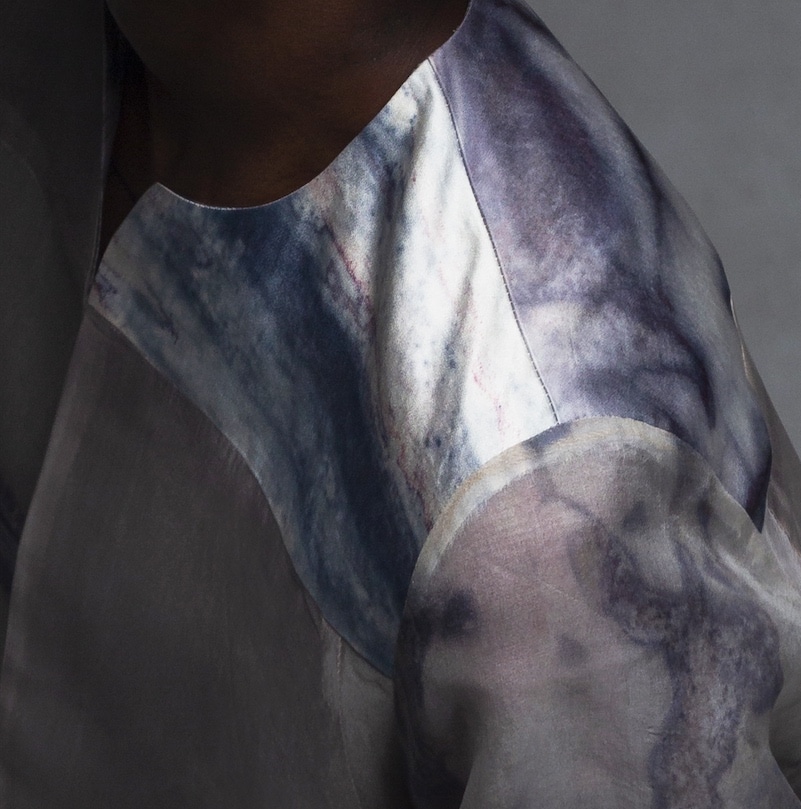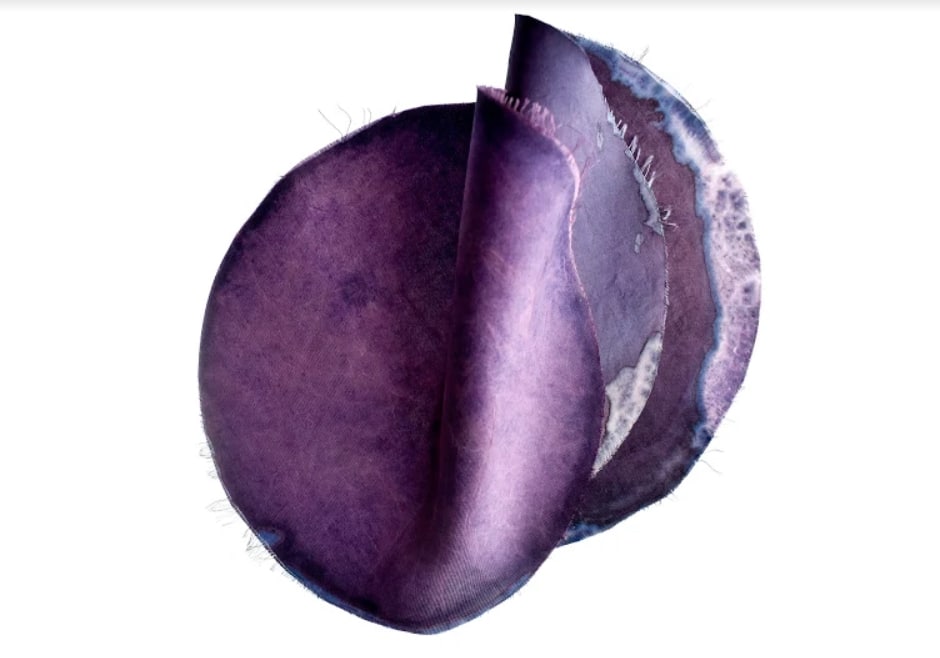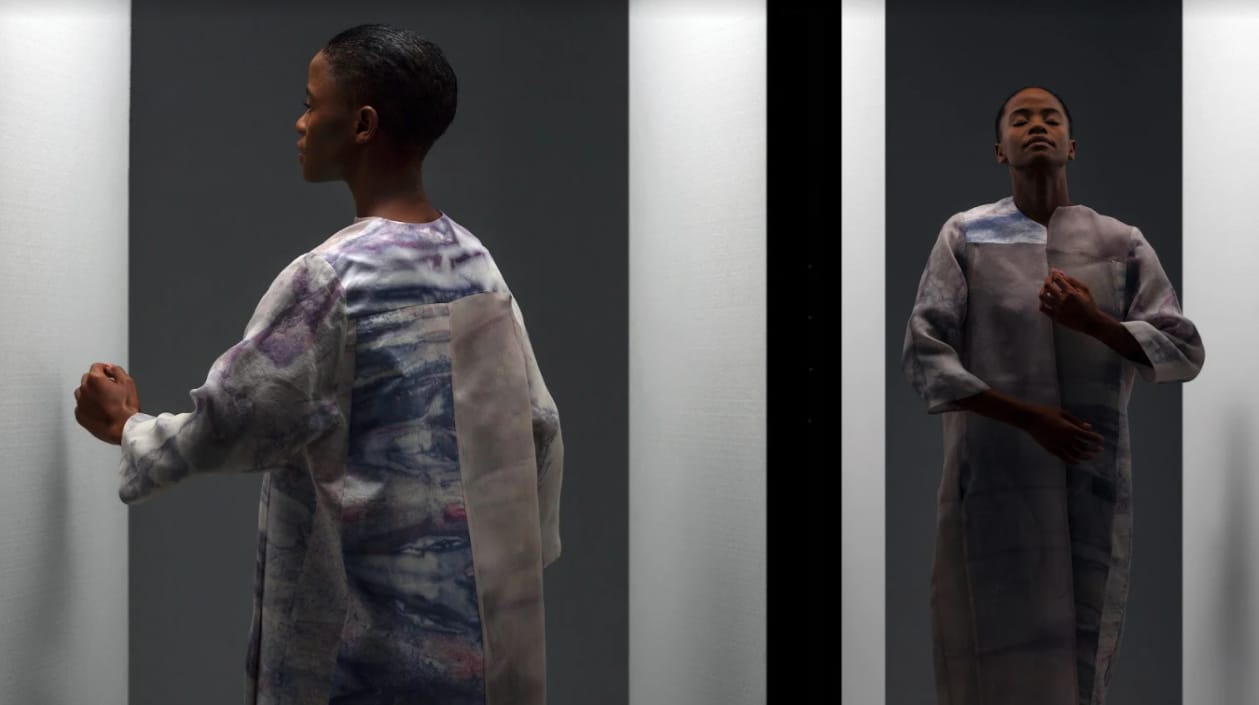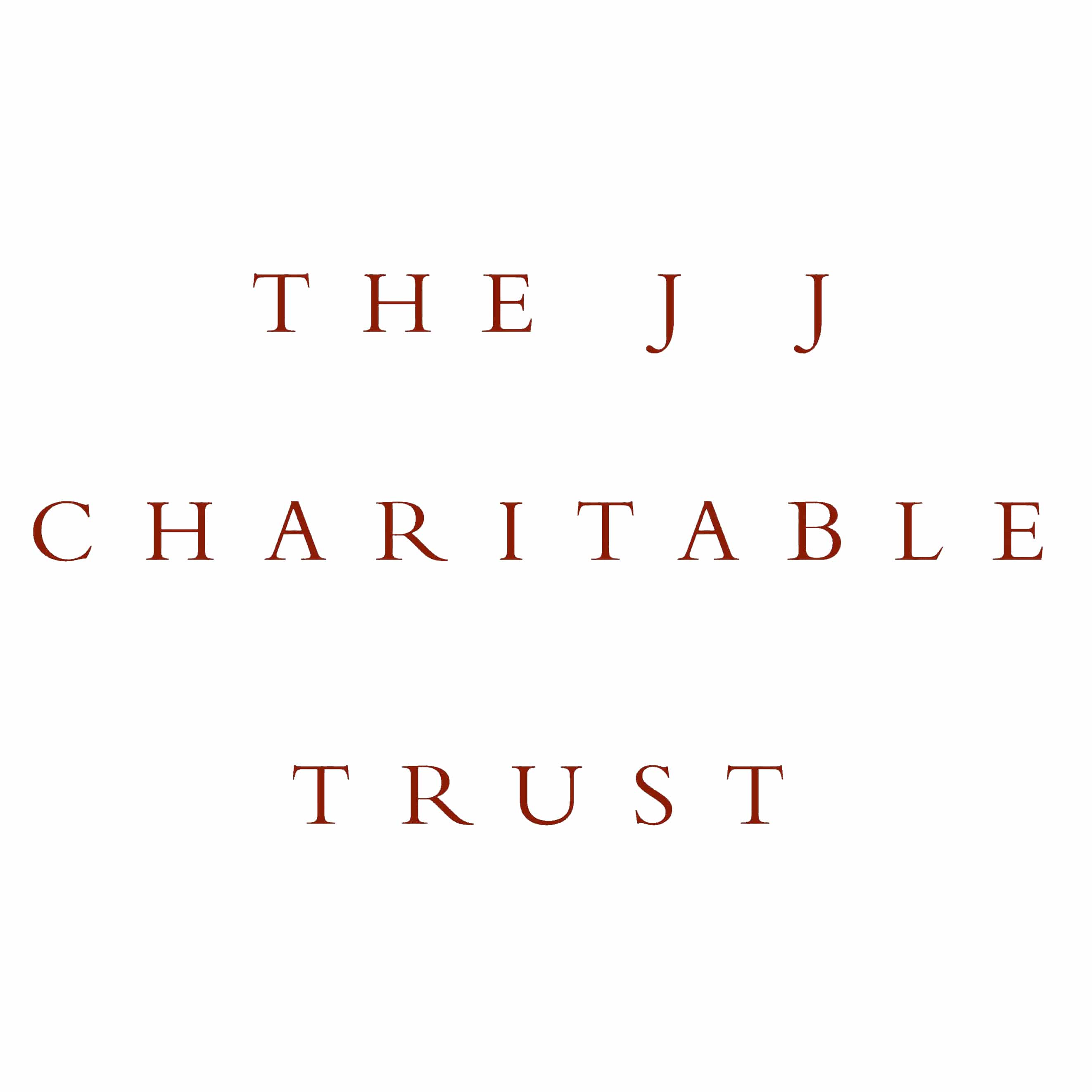United Kingdom (London)
Faber Futures is revolutionising colour with bacteria, using 500 times less water than traditional dyeing.
Assemblage 002 is a reversible silk jacket produced by Faber Futures and dyed using the pigment-producing bacteria, streptomyces coelicolor. Founder and materials designer Natsai Audrey Chieza started working with the microorganism in 2011. She set out to answer one question, “If a bacteria produces a pigment, how do we work with it to dye textiles?”

After eight years of toying with the biochemistry, Natsai produced a working design process for her bio-pigment. The liquid cultured bacteria is applied directly to the silk and left to rest for a few days. As the colonies populate, the bacteria cells produce an antibiotic that ranges in colours from reds and pinks to purples and blues depending on the pH level the bacteria is grown in. The colour seeps out of the cell walls, permanently dyeing the fabric.
The resulting dye pattern can be controlled by varying the application process of the bacteria. By twisting, spraying, dipping, brushing, submerging, stamping, etc., Faber Futures has proven bacteria placement can provide everything from a uniform dye, to a graphic pattern.
The pigmentation process is such a revolutionary way of working with colour that Faber Futures’ pigment vials were purchased by the Forbes Pigment Collection at Harvard Art Museums. (The collection is home to almost 5,000 colour pigments and varnishes, some of which date back as far as 1000BC.) Natsai is taking it one step further. Working with Ginkgo Bioworks, Faber Futures embedded the pigment production process into the DNA of the living organism. Natsai says this is possible because she has been freed from the “profound lack of imagination” that our dependence on fossil fuels has cultivated. To imagine “how else we could live” she argues that a mental shift must occur so we can unleash the possibilities of the new scientific discipline that is synthetic biology.

Streptomyces coelicolor is an easy bacteria to grow and most importantly it is harmless to humans and the environment. The production and dye processes require 500 times less water than traditional dyeing and need zero colour-fixer. Now Natsai is working on ways to scale this all-natural pigmentation process, prioritising sustainability and equitability so that synthetic biology doesn’t simply replace and replicate the damaging infrastructure of the oil age.
AtlasAction: Imagine building the future with biology: watch Natsai’s Ted talk.
► Faber Futures was mapped in Katrina Orsini’s AtlasChart: 4 companies cleaning up colour
Bio
Lover of lipstick and leopard print. Design historian focusing on biodesign and speculative design. Uses her own apartment as a lab to try to replicate biodesign. Fails repeatedly.
Project leader
Natsai Audrey Chieza, Founder
Partners
This project has been selected as part of FashionFutures, a new content channel that maps the work of people transforming the fashion sector: the designers, craftspeople, social innovators, educators, community leaders and communicators. Atlas of the Future is excited to partner with Makerversity, with the support of The J J Charitable Trust and their network of fashion friends.
Support the Atlas
We want the Atlas of the Future media platform and our event to be available to everybody, everywhere for free – always. Fancy helping us spread stories of hope and optimism to create a better tomorrow? For those able, we'd be grateful for any donation.
- Please support the Atlas here
- Thank you!

Image: Oskar Proctor con Manthe Ribane

Image: Faber Futures



